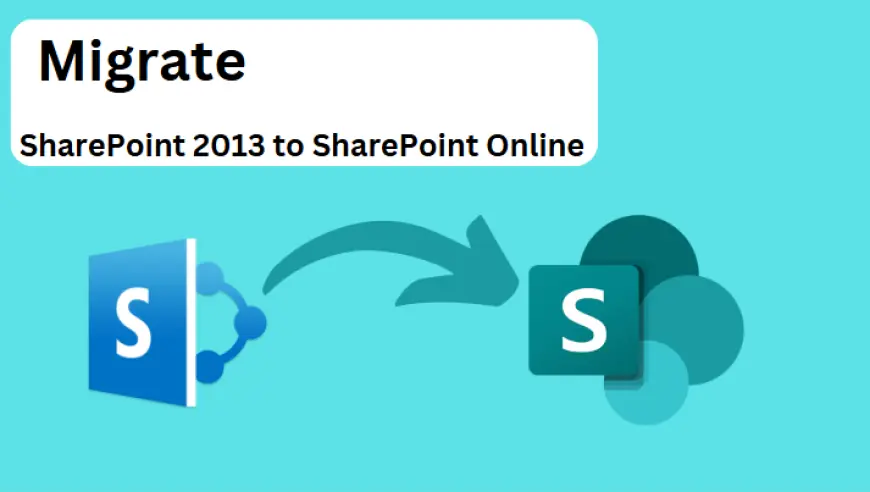Migration of SharePoint 2013 to SharePoint Online
Here, we will discuss how SharePoint 2013 can be migrated to SharePoint Online step by step.

Most Organizations are turning towards cloud-based solutions nowadays. SharePoint Online is also part of Microsoft 365, a cloud-based service. Hence, SharePoint 2013 to SharePoint Online migration is important for most organizations today because SharePoint Online supports advancement, scales quickly within the organization, and helps in easy collaboration among employees. Thus, here, we will discuss how SharePoint 2013 can be migrated to SharePoint Online step by step.
Why shift SharePoint 2013 to SharePoint Online?
- First, SharePoint Online provides more advanced security features.
- We get to our data from anywhere and on any device, thanks to cloud-based service
- In SharePoint Online, we don’t have to manage software updates, backups, etc. manually. Microsoft takes care of that.
- It is a plan-based service, which means we only have to pay for what we are using.
The first way to migrate SharePoint 2013 to SharePoint Online
We are using here the tool called SPMT, which is the SharePoint Migration Tool provided by Microsoft. That includes the following steps:
- First, install and launch SPMT.
- Then, enter your Microsoft account details.
- Tap on Add new migration.
- Then, select a source URL such as single user data to migrate data of the selected single user, or select the other option to add multiple user details in a CSV or JSON file.
- Choose the type of Migration: Site migration, document library migration, etc.
- Then, configure the source and target with login credentials by providing the source site URL.
- Finally, once the configuring is done, then start the migration.
Drawbacks of SPMT
Unfortunately, the process can be improved since it has some disadvantages that may influence the migration process. A few of the disadvantages are mentioned below:
- Size limitation is there; it can only process up to 250 GB of data.
- SPMT won't work for the old SharePoint version 2007.
- SPMT can take a lot of time to process.
- Also, the filtration and personalization features are not available in SPMT.
You may face some other disadvantages, as well. So, if you don't have any problem with these limitations, then you can use the SPMT, but if you do, then go for the automated tool.
The second method of SharePoint 2013 to SharePoint Online Migration.
This method requires professional tools for migration. However, there are multiple tools available out there, and if I had to suggest one, then the Shoviv SharePoint migrator would be the ideal option for migrating SharePoint 2013 to SharePoint Online. The tool is packed with all the necessary features, which helps in ensuring a smooth execution.
Shoviv's SharePoint Migration Tool: Features.
Well, here are some of the major features of this tool; if you like it, then definitely opt for it for migration:
- This software has no size limitation for adding multiple sites, and users can process multiple sites simultaneously.
- Also, a filtering and scheduling option is available.
- It works great with all versions of SharePoint and Windows Operating System.
- This software even allows the user to track the whole procedure from the dashboard so that the users can ensure whether every bit of data gets migrated or not.
- Moreover, if you want to check this software's compatibility, a free version is also available.
Quick guide for using Shoviv’s Migrator
- Install and launch Shoviv's SharePoint Migrator.
- Then, select SharePoint to SharePoint Migration and state the source and target.
- If necessary, use the filter feature and adjust other settings; tap next.
- Finally, if necessary, select the schedule feature and tap finish.
Conclusion
In this article, we have learned two ways for SharePoint 2013 to SharePoint Online migration: SPMT and the Shoviv SharePoint Migrator. However, SPMT has a few drawbacks but it works well for small migrations; if the amount of data is huge, then I suggest using the professional tool because there are more advanced features than the SPMT, and it can easily migrate SharePoint content.












